
Elena Khomenko (chair)
María Jesús Martínez González (co-chair)
Iñigo Arregui
Melania Cubas Armas
Carlos José Díaz Baso
Reza Rezaei
Beatrice Popescu Braileanu
Alberto Escobar Rodríguez
Manuel Collados
Scientific Organization Committee:
Elena Khomenko (IAC, chair)
María Jesús Martínez González (IAC, Spain, co-chair)
Alina Donea (Univ. Monash, Australia)
Mausumi Dikpati (HAO, USA)
Natasha Shchukina (MAO, Ukraine)
Francesca Zuccarello (Univ. Catania, Italy)
Aimee Norton (Univ. Stanford, USA)
Lindsey Fletcher (Univ. Glasgow, UK)
Ineke de Moortel (Univ. St. Andrews, UK)
Emilia Kilpua (Univ. of Helsinki, Finland)
Contact:
Elena Khomenko
Instituto de Astrofísica de Canarias
c/ Vía Láctea s/n
38200 La Laguna (Tenerife)
Spain
e-Mail: solarnet4m(at)iac.es
Elena Khomenko (IAC, chair)
María Jesús Martínez González (IAC, Spain, co-chair)
Alina Donea (Univ. Monash, Australia)
Mausumi Dikpati (HAO, USA)
Natasha Shchukina (MAO, Ukraine)
Francesca Zuccarello (Univ. Catania, Italy)
Aimee Norton (Univ. Stanford, USA)
Lindsey Fletcher (Univ. Glasgow, UK)
Ineke de Moortel (Univ. St. Andrews, UK)
Emilia Kilpua (Univ. of Helsinki, Finland)
Invited Reviews:
Andreas Lagg "Measurements of photospheric magnetic fields"
Ann Marie Broomhall "Solar internal structure and dynamics"
Astrid Veronig "Solar eruptions and energetic events"
Consuelo Cid "Solar energetic events and space weather"
Iñigo Arregui "Heating of the solar corona"
Jaime de la Cruz "Non-LTE chromospheric diagnostics and inversions"
Rob Rutten "Observations and diagnostics of the solar chromosphere"
Sarah Gibson "Dynamics and diagnostics of the solar corona"
Sarah Matthews "Science with European Solar Telescope"
Yuhong Fan "Differential rotation and solar convective dynamo"
Invited Talks:
Ada Ortiz
Adur Pastor Yabar
Ariane Schad
Haruhisa Iijima
Jiri Stepan
Lauren Jouve
Maarit Käpylä
Marilena Mierla
Nazaret Bello Gonzalez
Nicki Viall
Philippa Browning
Rebecca Centeno
Tiago Pereira
Tobias Felipe
Tony Arber
Special session on "Upcoming telescopes and instruments":
Jose Carlos del Toro Iniesta "Solar Orbiter mission"
Masahito Kubo "Results and future of CLASP project"
Hans-Peter Doerr "Sunrise III project"
Valentín Martínez Pillet "DKIST telescope"
The registration includes conference material, all lunches, coffee breaks, one organised tour, and one conference dinner.
Early bird registration fee payment until November 16, 2016: € 350,- per person
Registration fee PhD students: € 200,- per person
Late registration after November 16, 2016: € 450,- per person
Registration for accompanying persons: € 100,- per person (tour and conference dinner)
Payment can be done in two ways:
Credit card:
Only VISA or MASTERCARD are acepted.
Please print the CREDIT CARD PAYMENT FORM, fill in all applicable fields with capital letters, scan it, and send by fax to
+34 922 605 210
or by email to solarnet4m(at)iac.es
In case you submit the form via fax, please send also an email to LOC at solarnet4m(at)iac.es
Wire transfer:
Please contact the LOC at solarnet4m(at)iac.es or the bank coordinates.
PLEASE NOTE: No payment will be accepted at the conference!
The receipt for your registration fee and a copy of the amount charged to your credit card or bank account will be attached to the conference material that you will get at the Registration Desk, upon arrival.
Should you need to cancel your registration, please inform the LOC by email to solarnet4m(at)iac.es
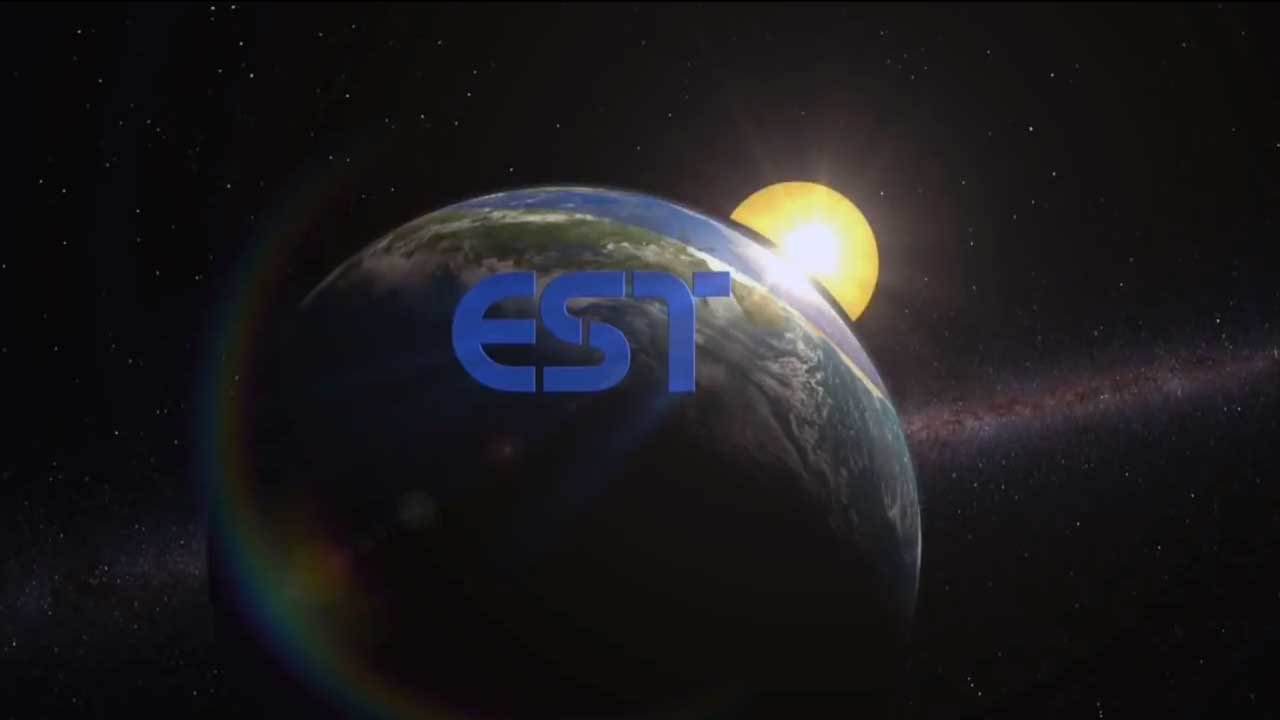

Session: 8. Upcoming telescopes and instruments
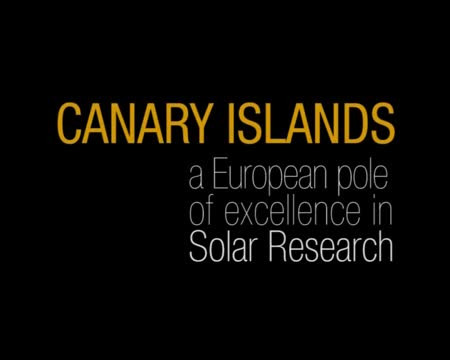

Session: 8. Upcoming telescopes and instruments
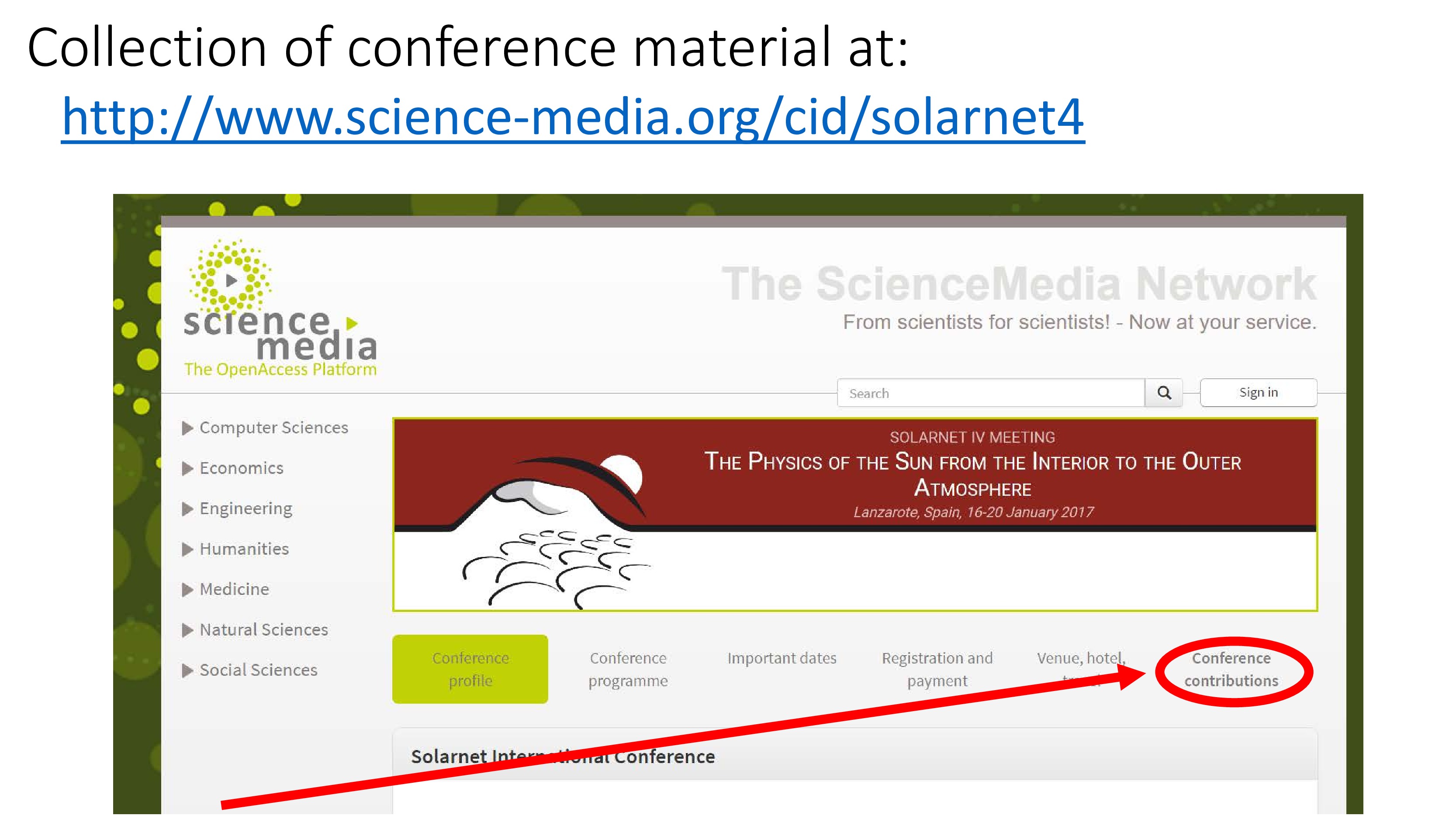

Session: 1. Solar internal structure from helioseismology
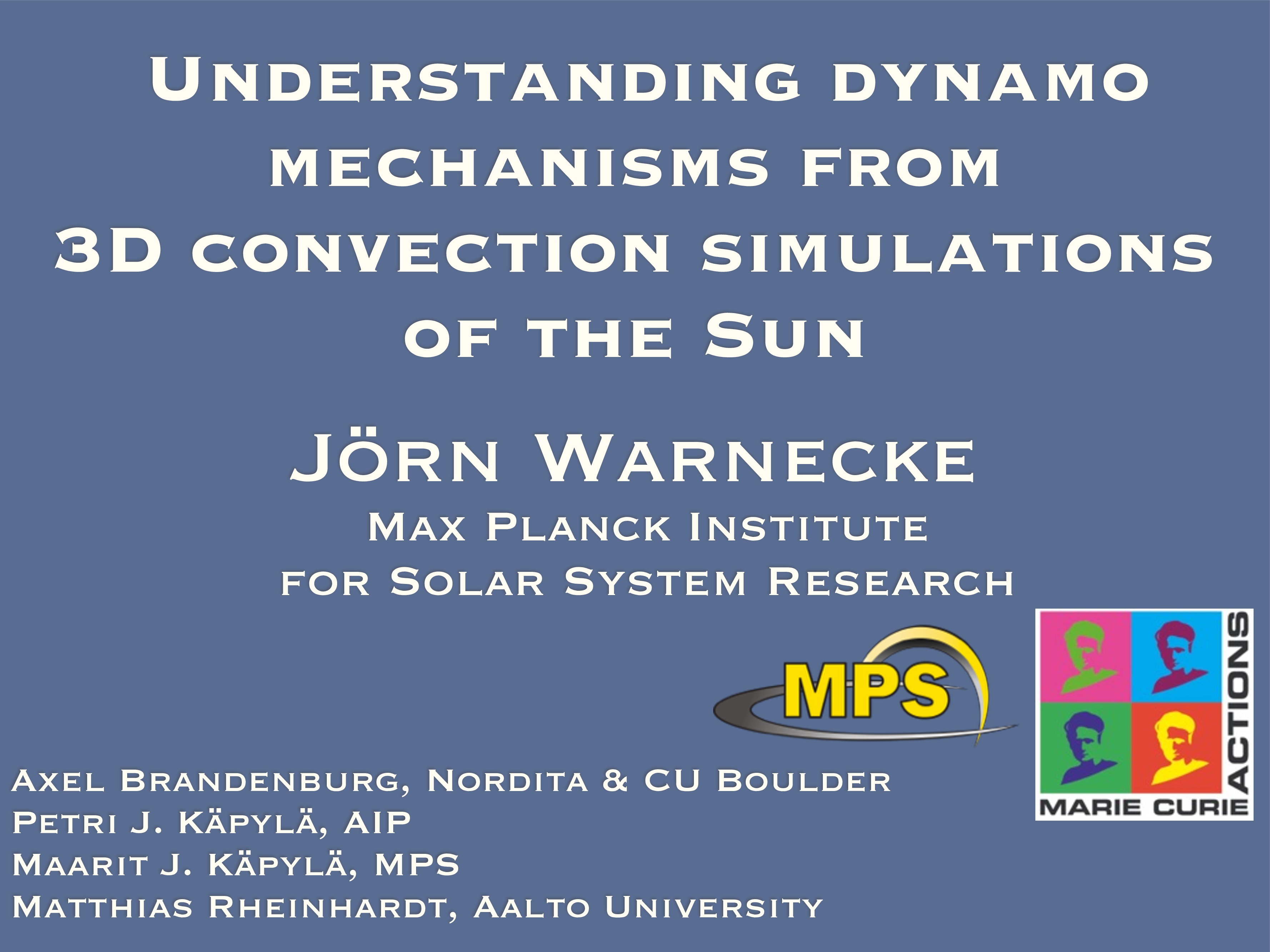
Session: 2. Solar cycle: convection, rotation, dynamo, and flux emergence
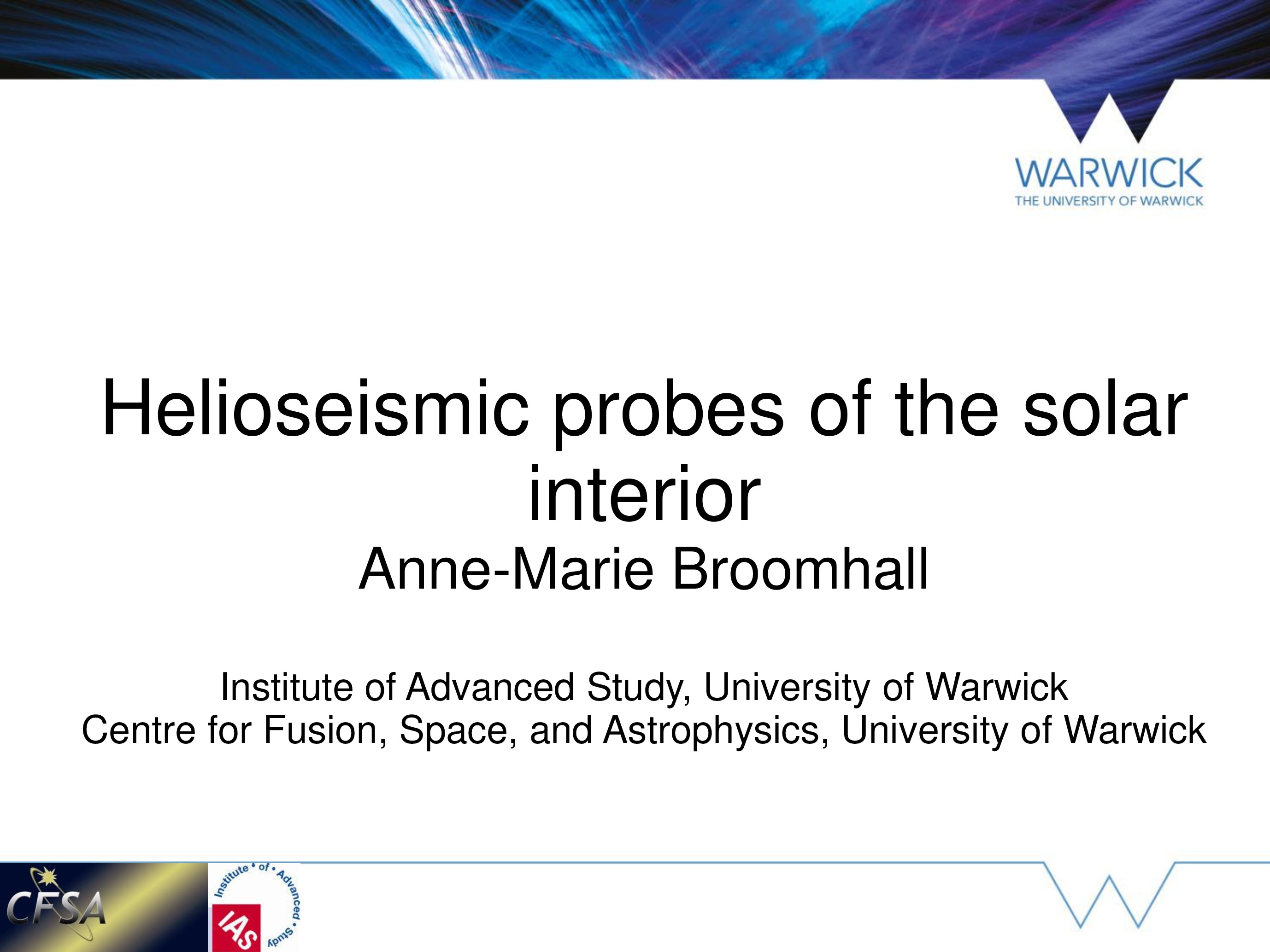
Session: 1. Solar internal structure from helioseismology
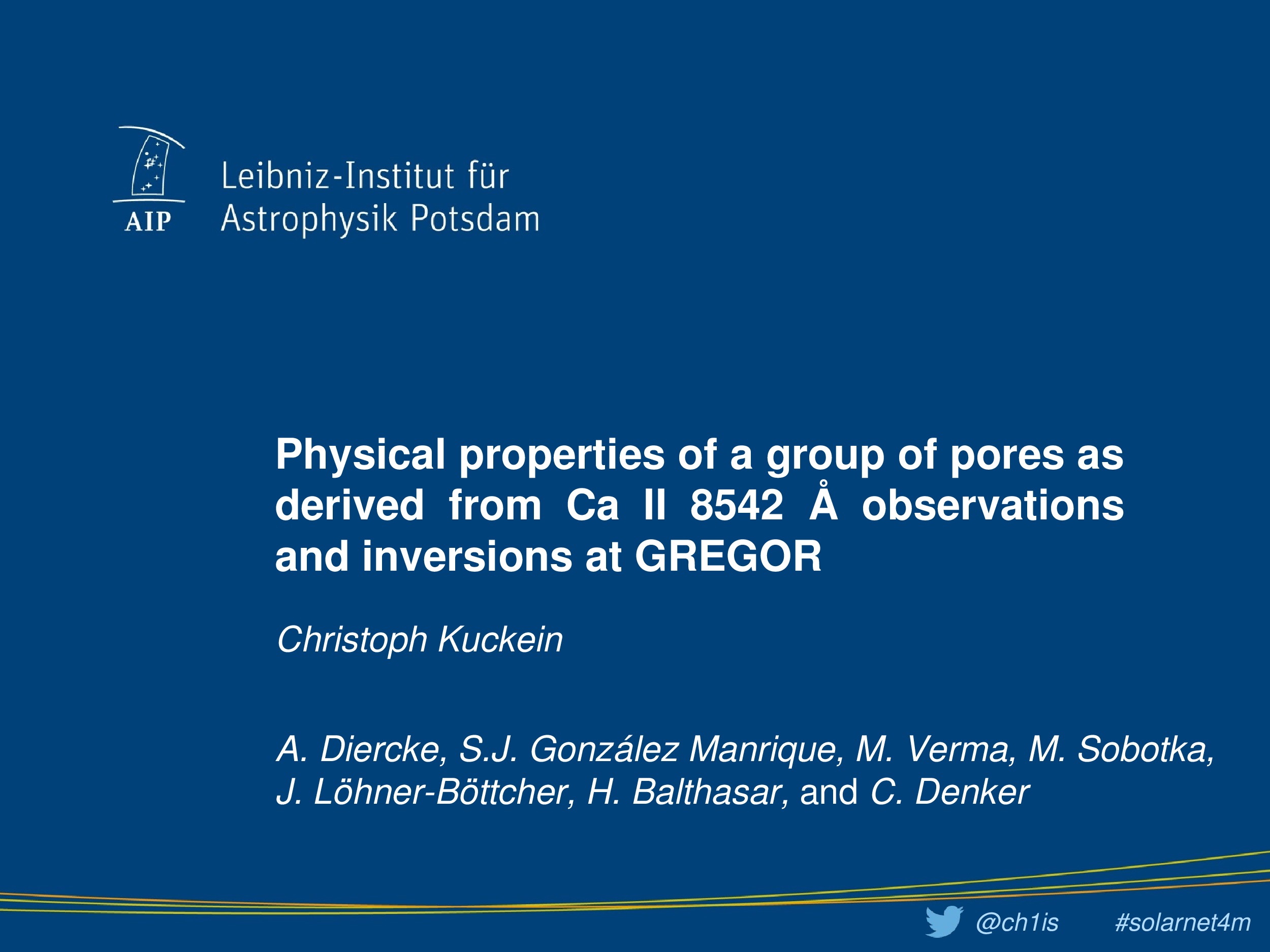
Session: 5. Chromospheric dynamics and magnetism
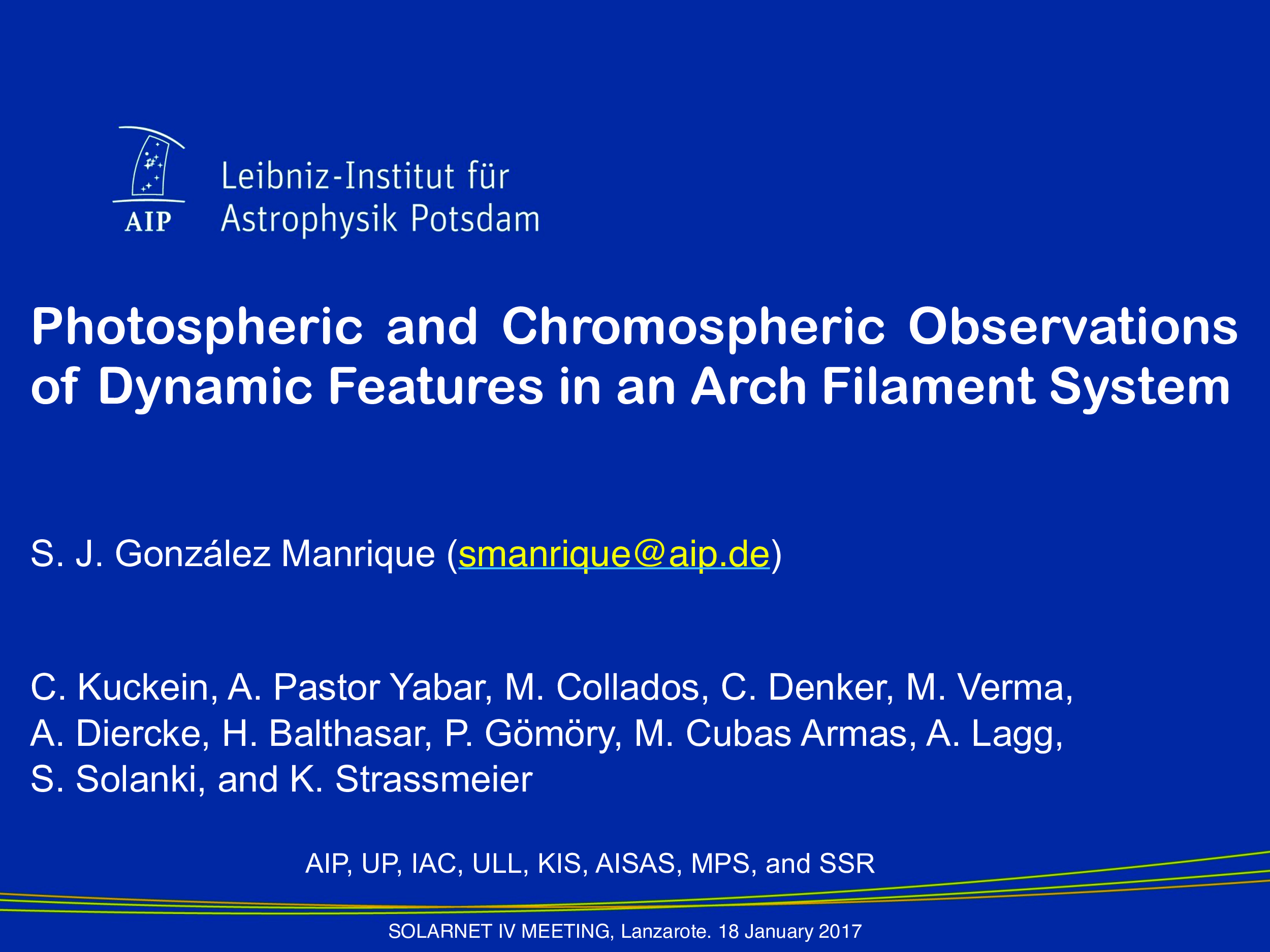
Session: 5. Chromospheric dynamics and magnetism
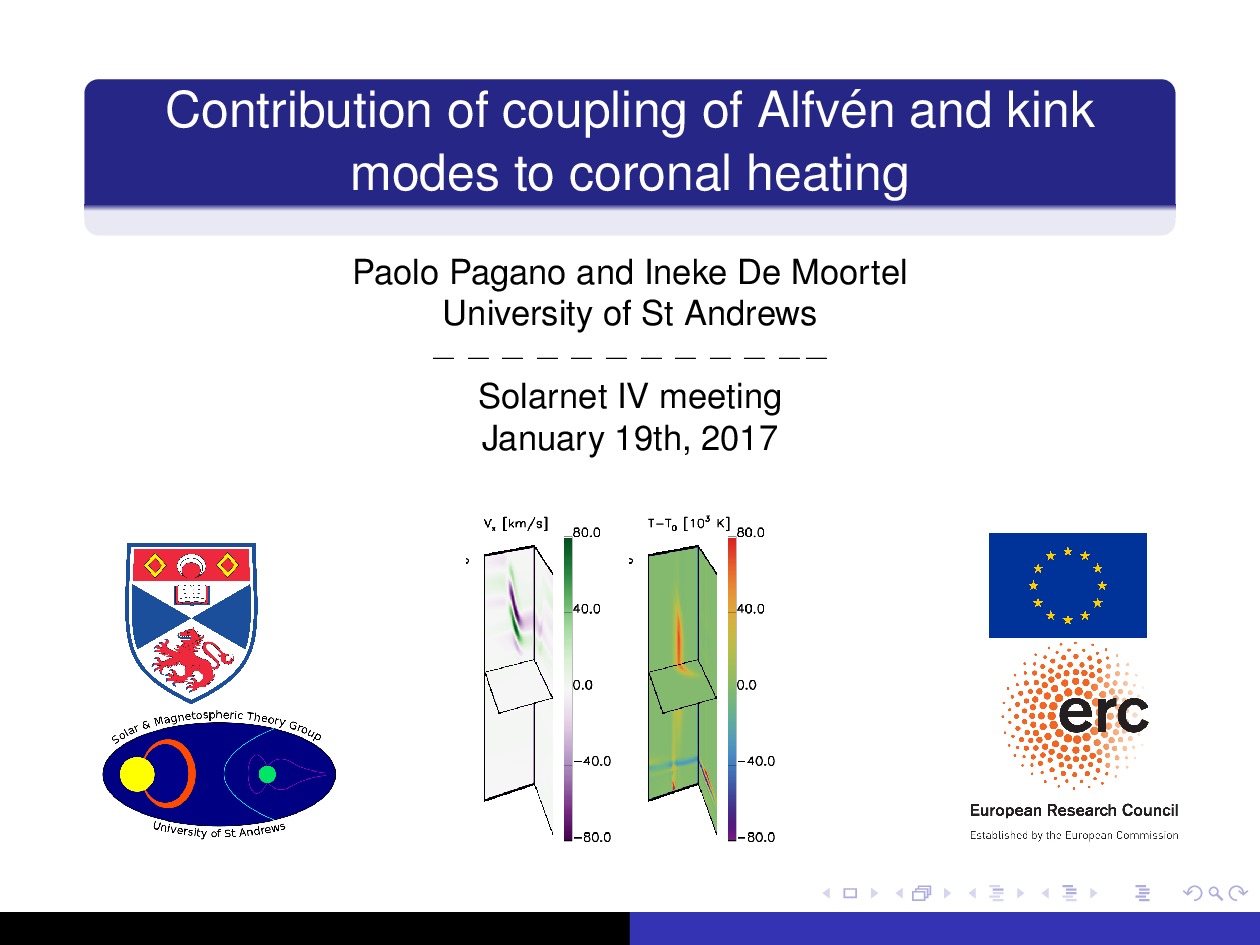
Session: 6. Corona and transition region: dynamics, magnetic fields and heating mechanisms
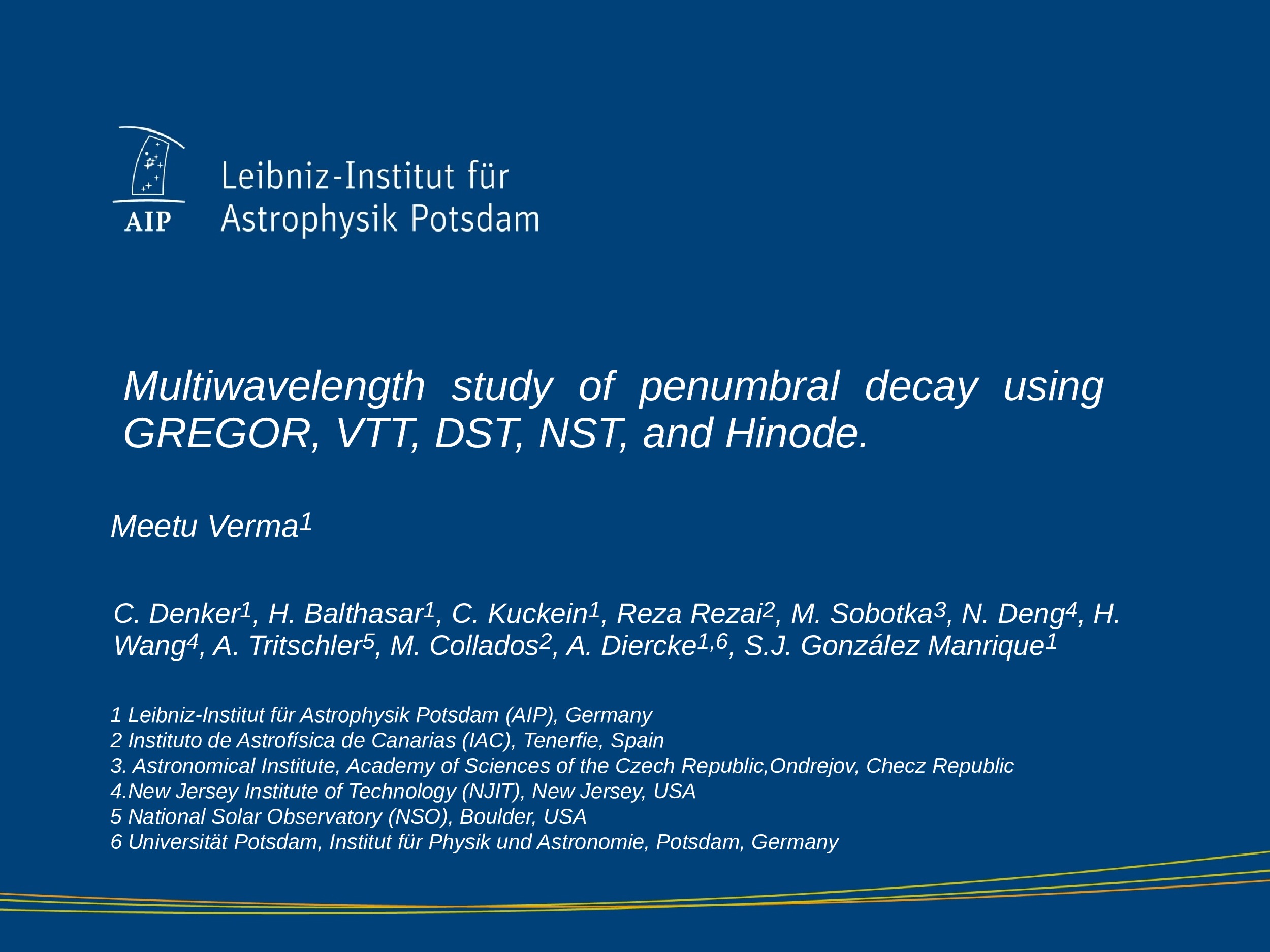

Session: 4. Photospheric dynamics and magnetism
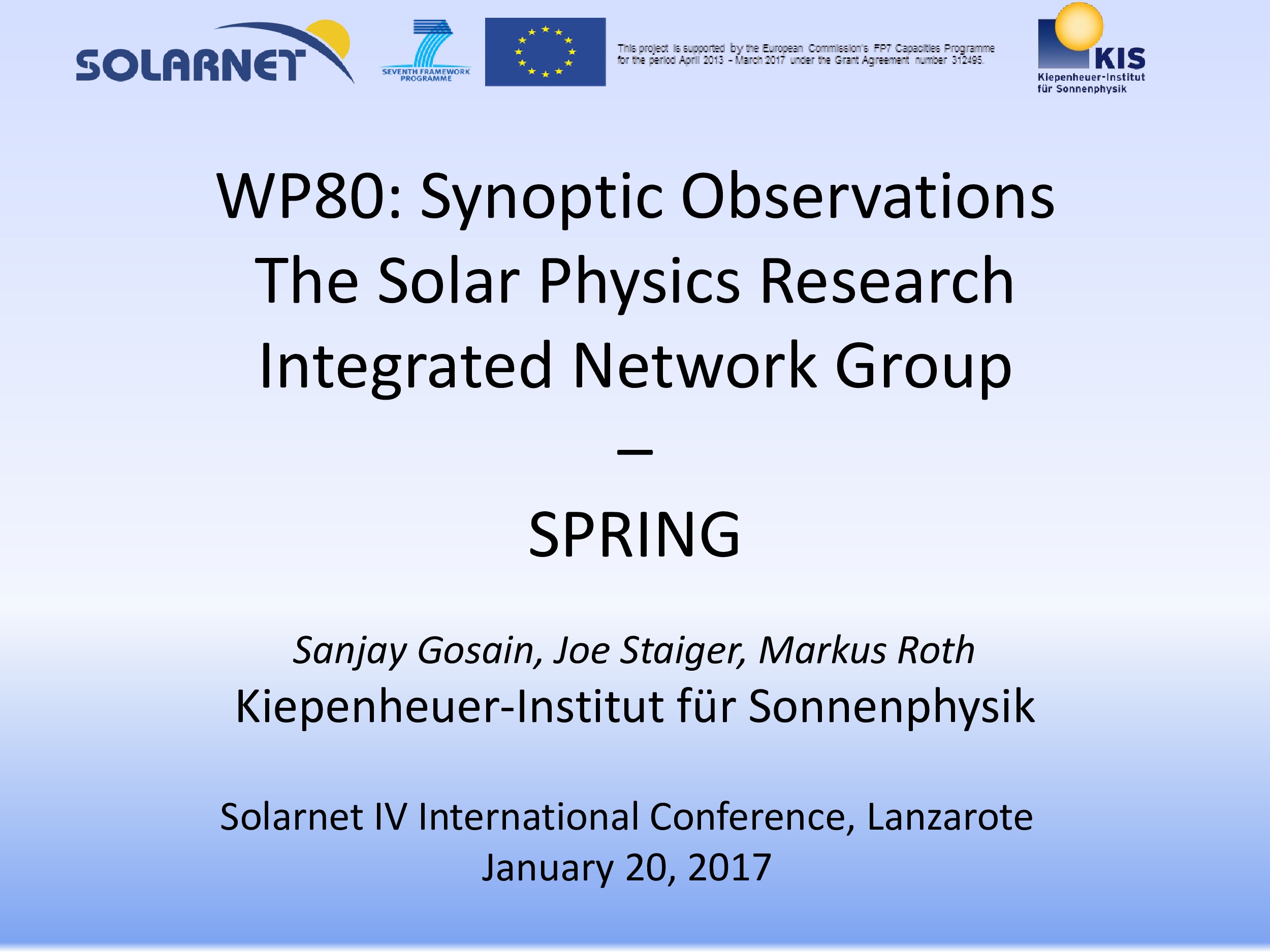
Session: 8. Upcoming telescopes and instruments
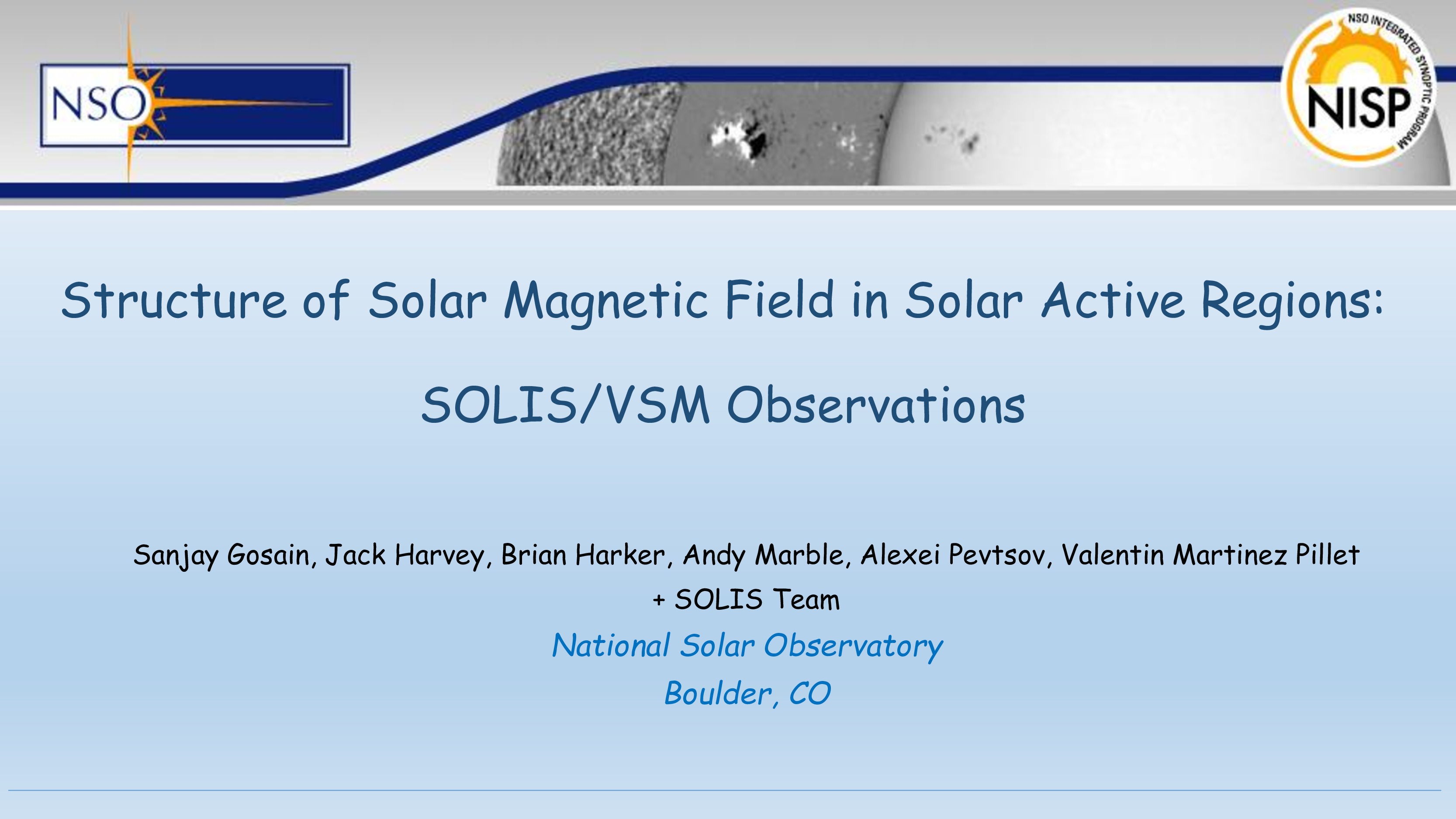
Session: 5. Chromospheric dynamics and magnetism
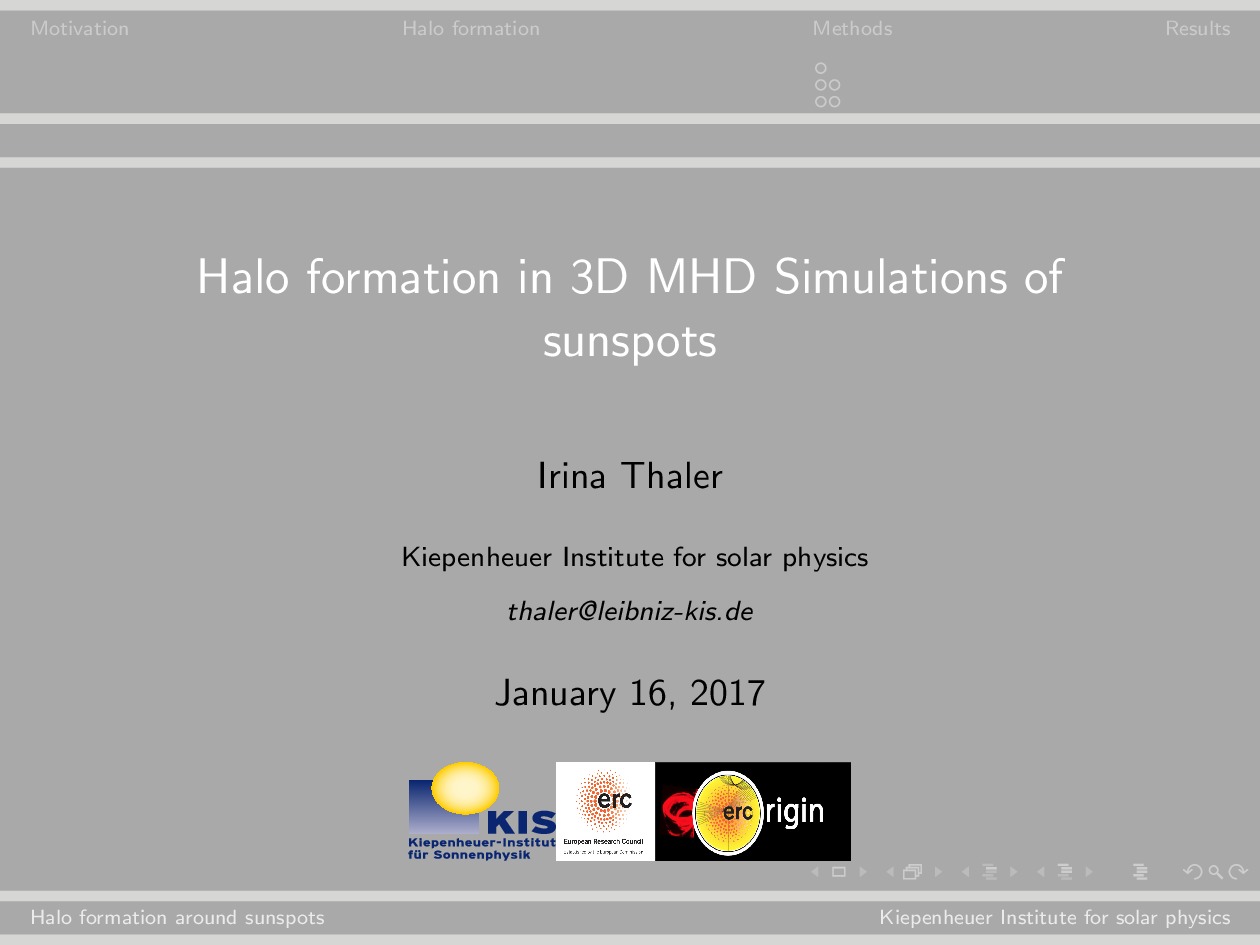
Session: 1. Solar internal structure from helioseismology
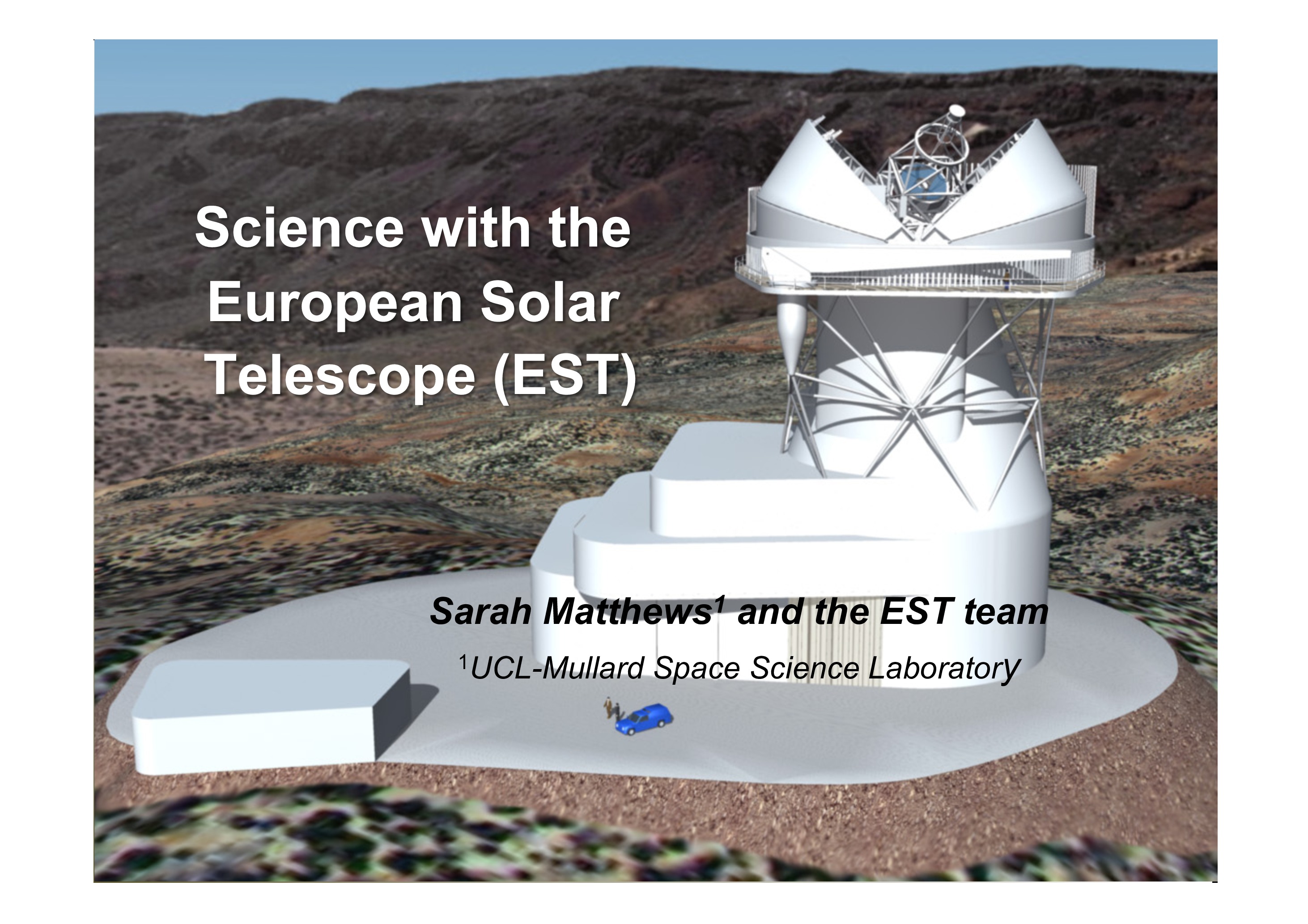

Session: 8. Upcoming telescopes and instruments
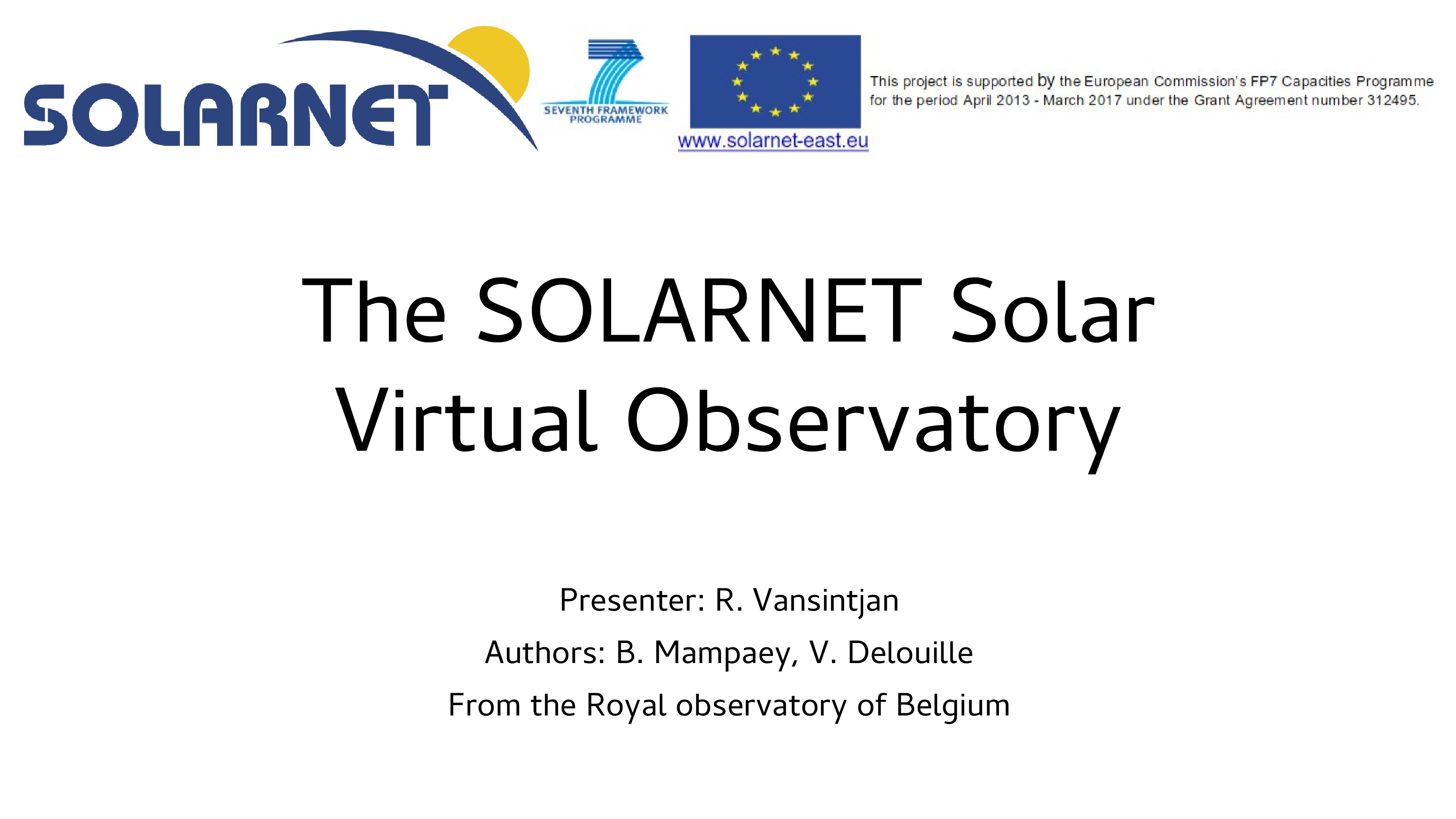

Session: 8. Upcoming telescopes and instruments
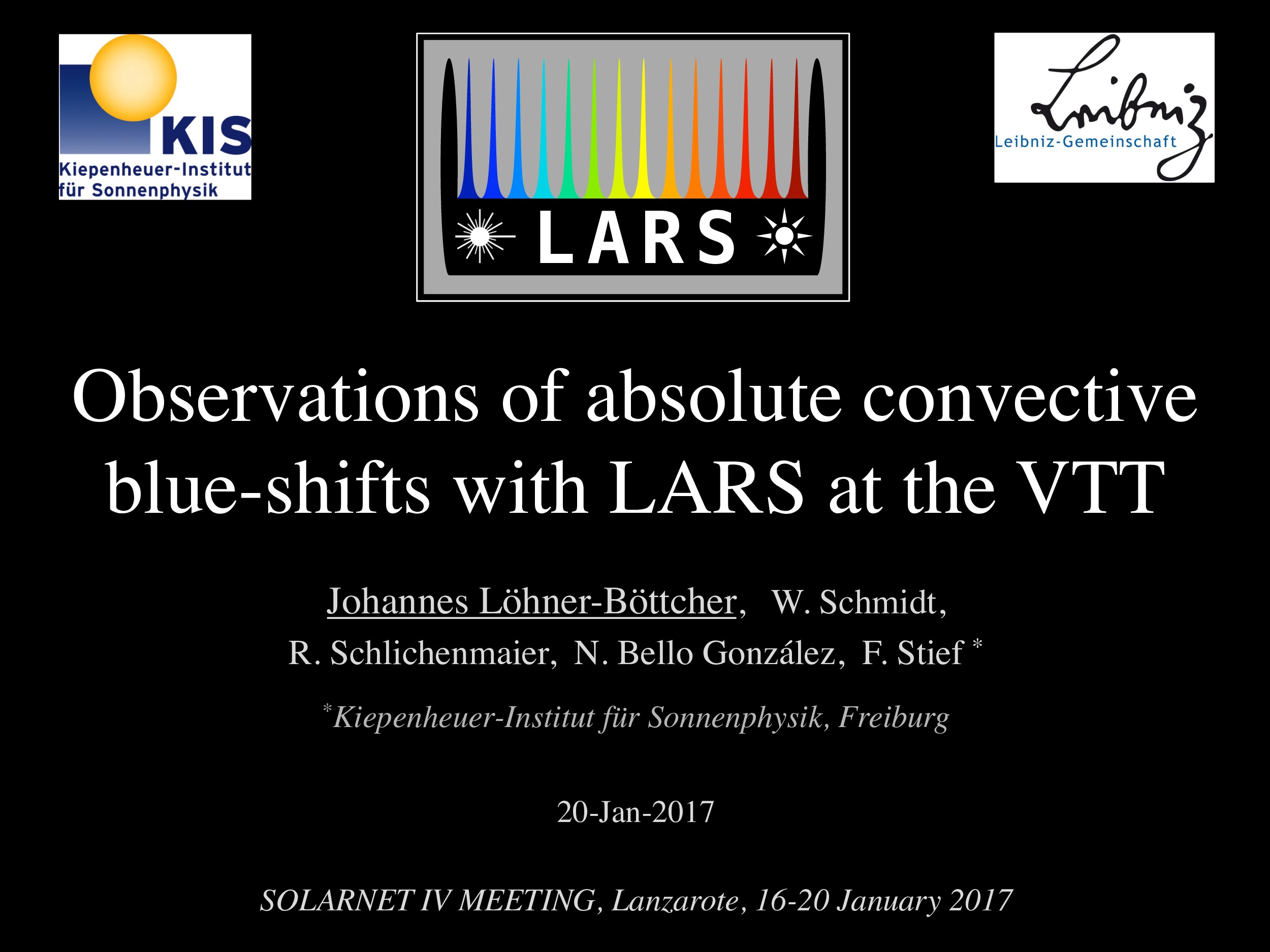
Session: 8. Upcoming telescopes and instruments
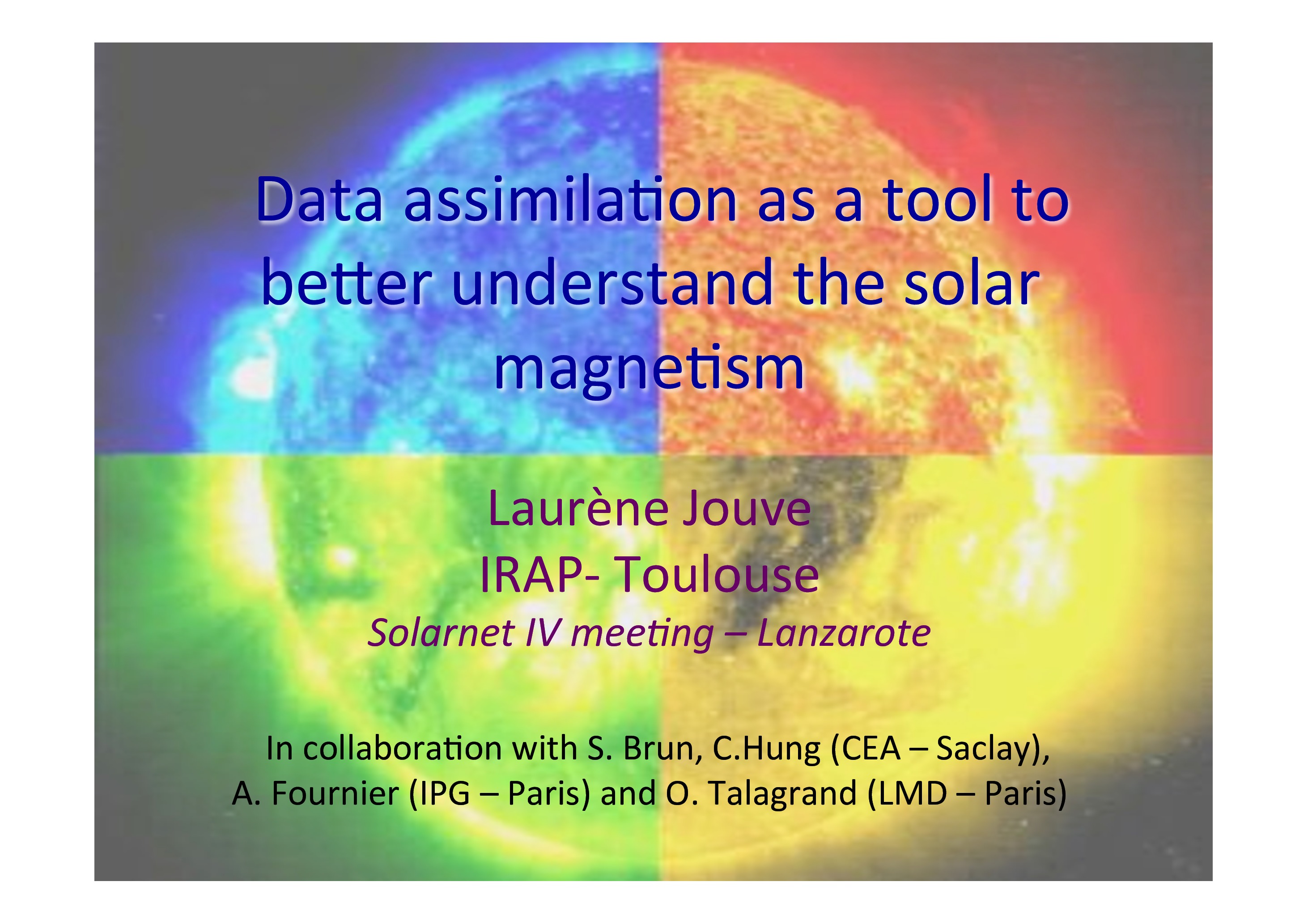

Session: 1. Solar internal structure from helioseismology
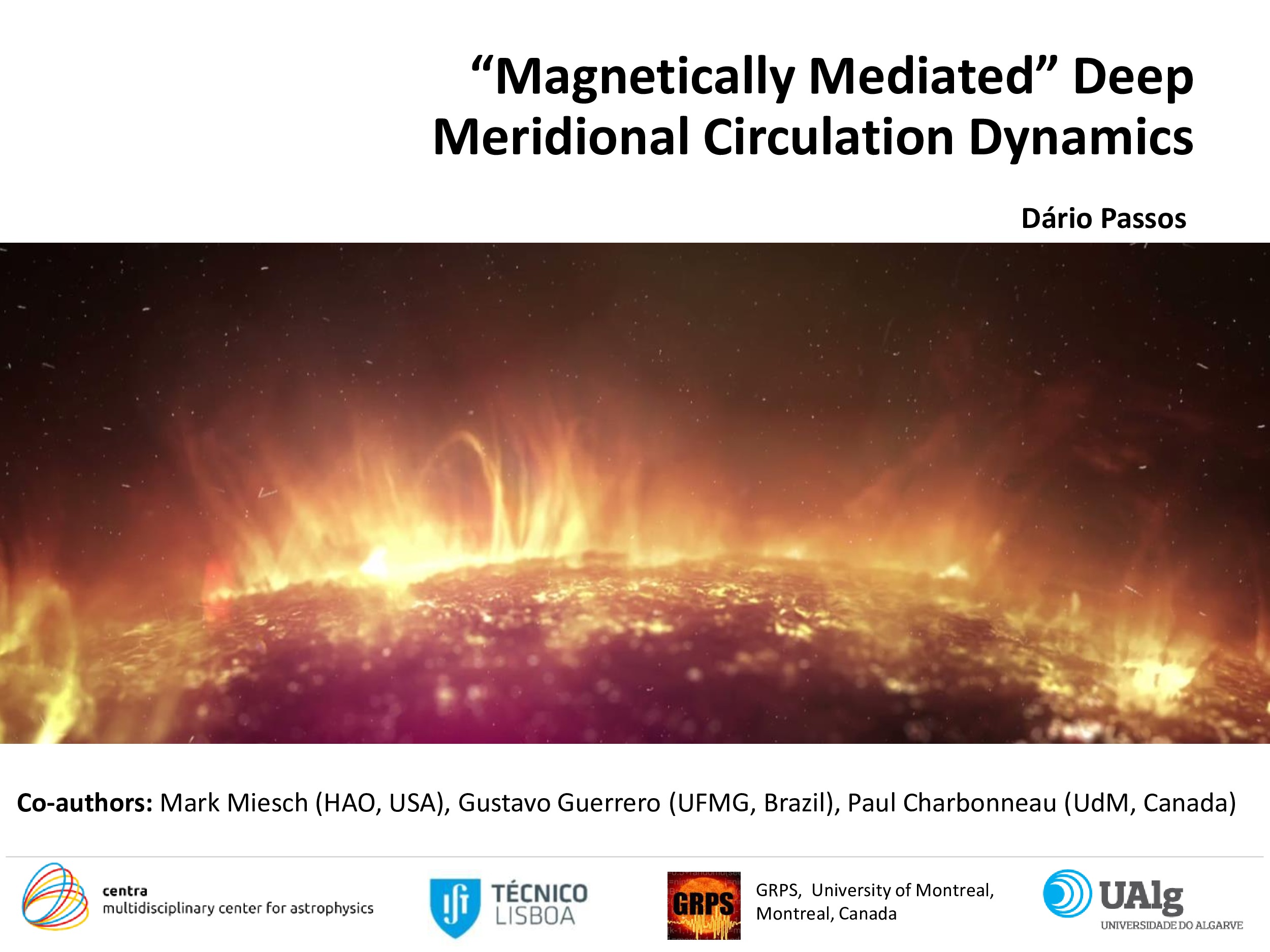

Session: 1. Solar internal structure from helioseismology
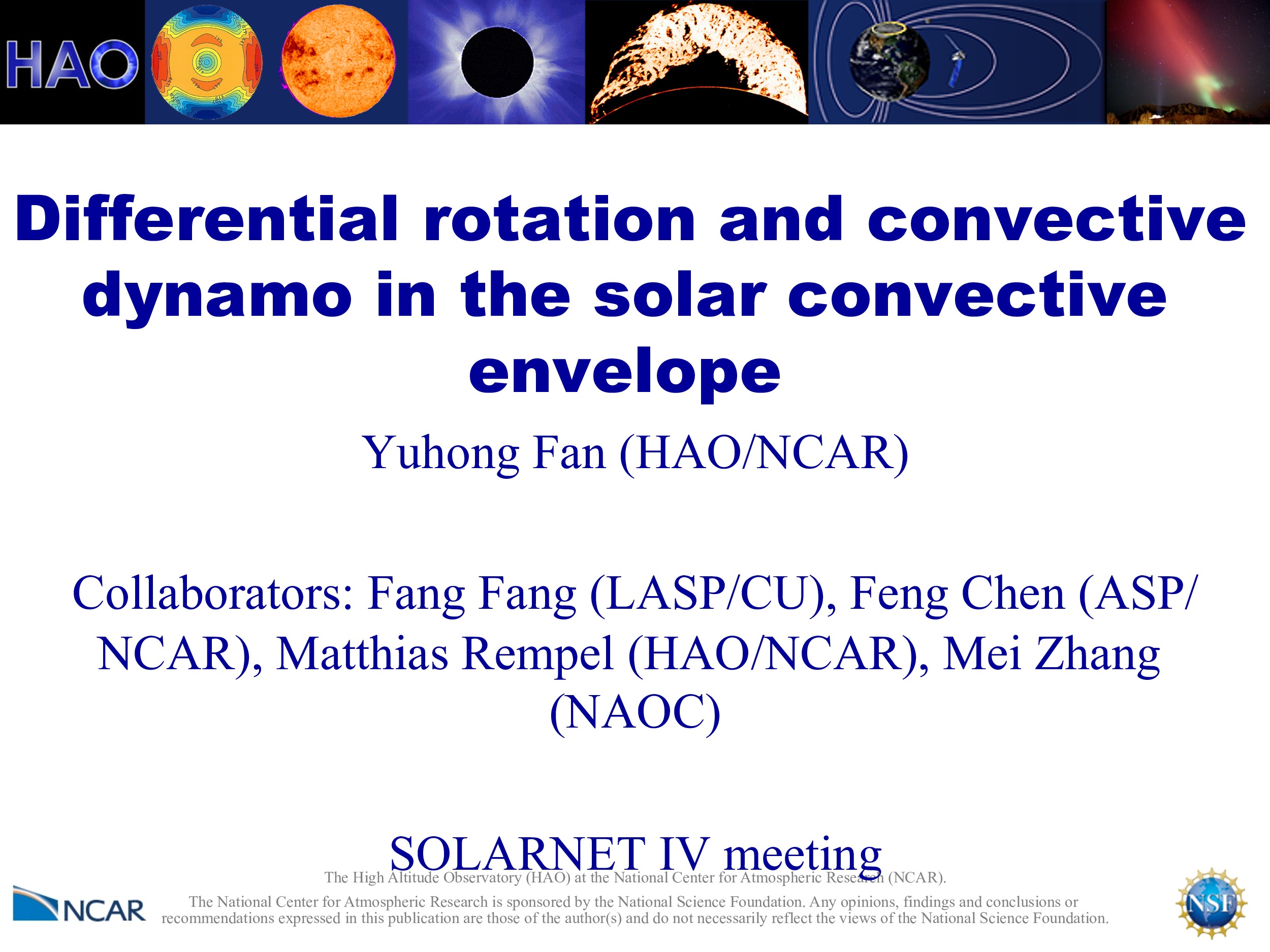

Session: 2. Solar cycle: convection, rotation, dynamo, and flux emergence
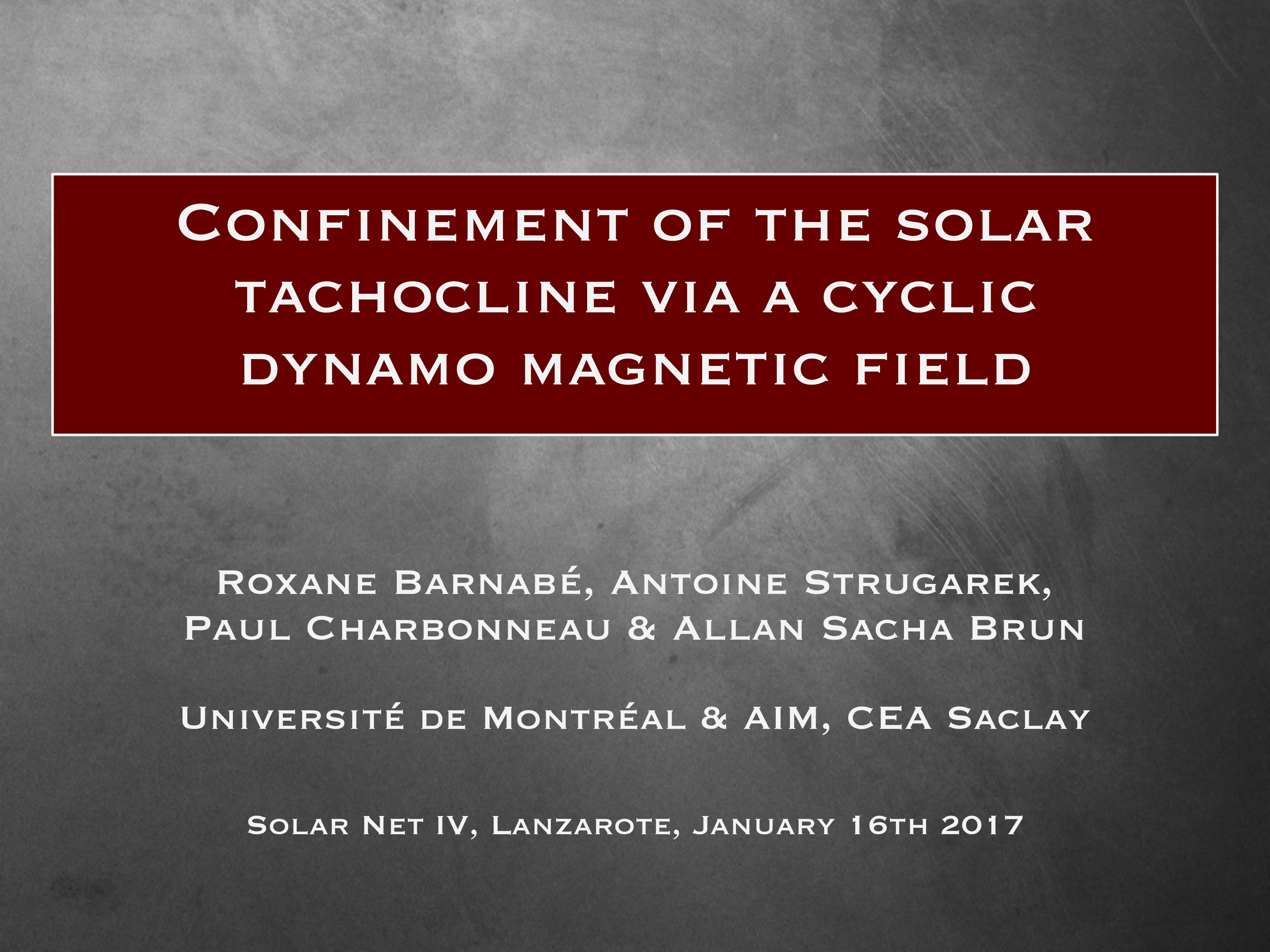

Session: 2. Solar cycle: convection, rotation, dynamo, and flux emergence
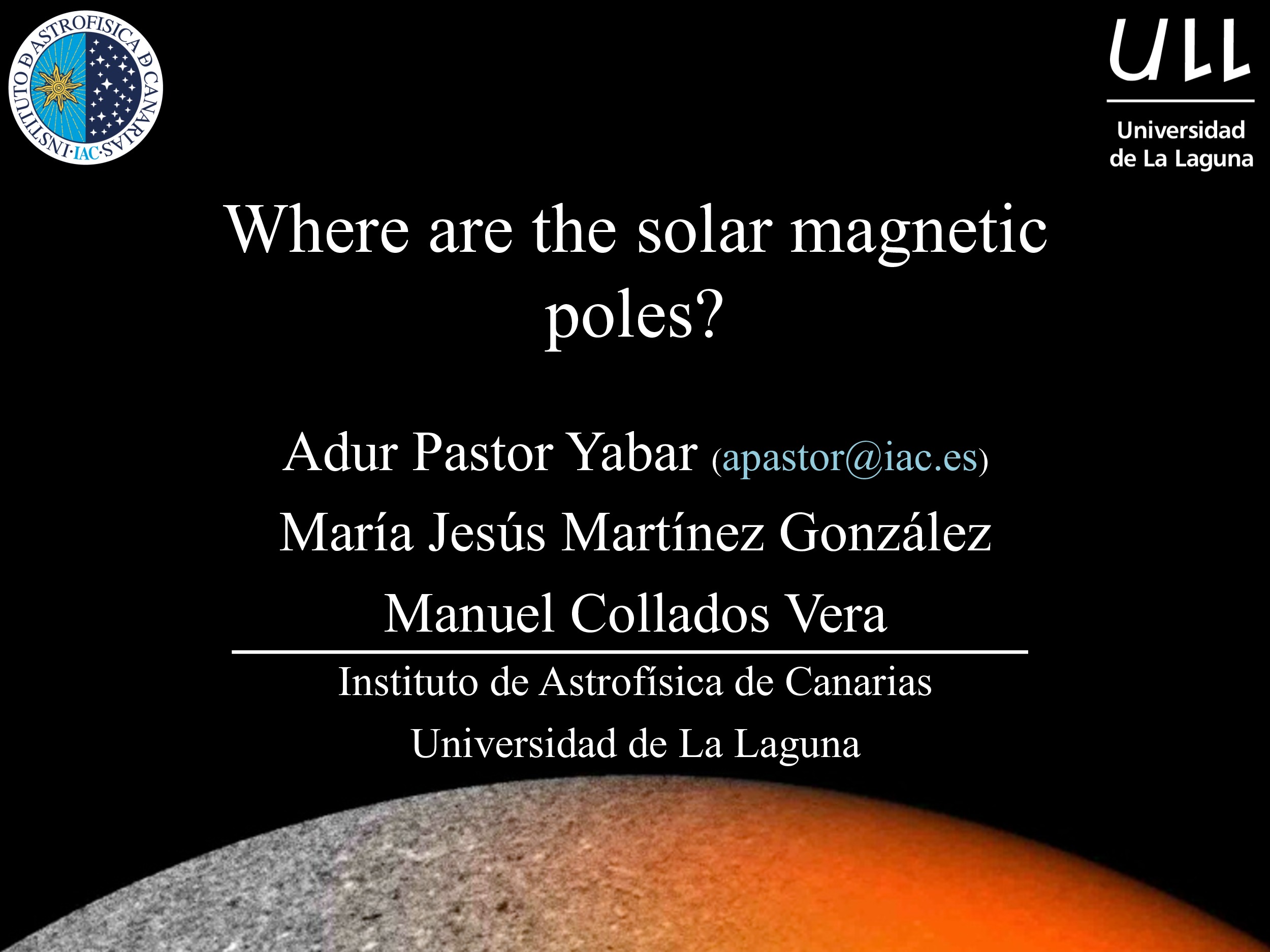

Session: 2. Solar cycle: convection, rotation, dynamo, and flux emergence
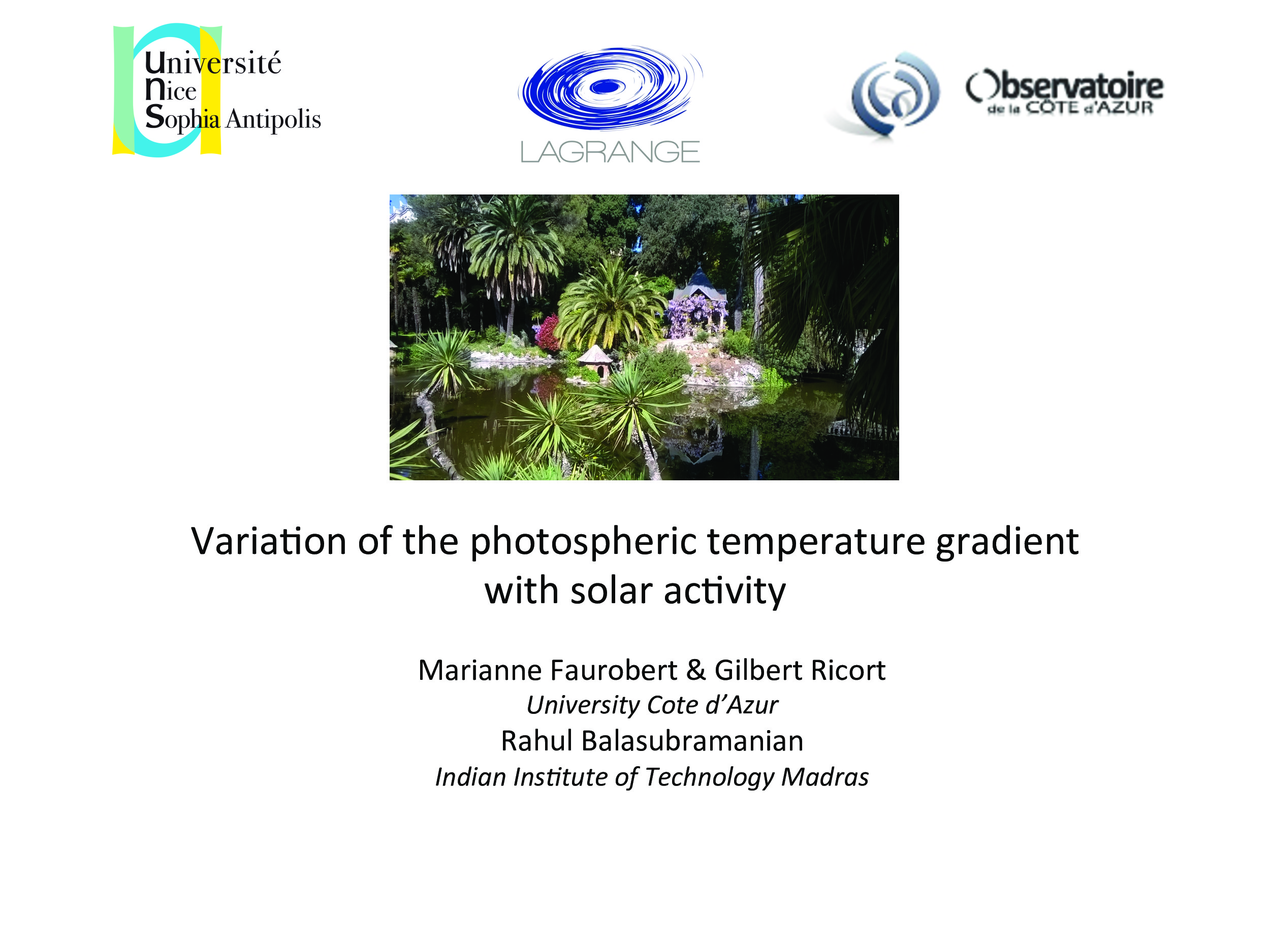

Session: 2. Solar cycle: convection, rotation, dynamo, and flux emergence
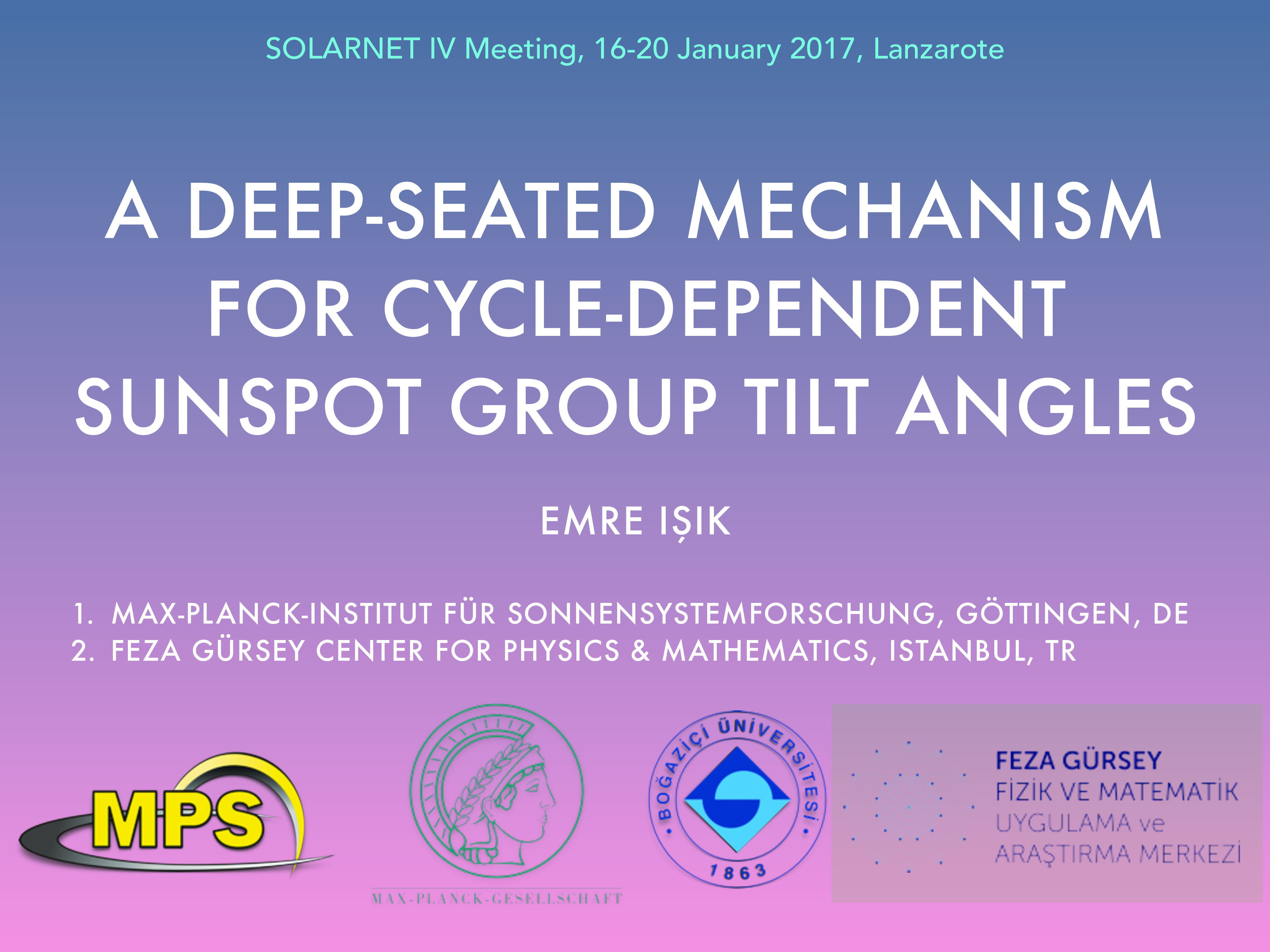

Session: 2. Solar cycle: convection, rotation, dynamo, and flux emergence
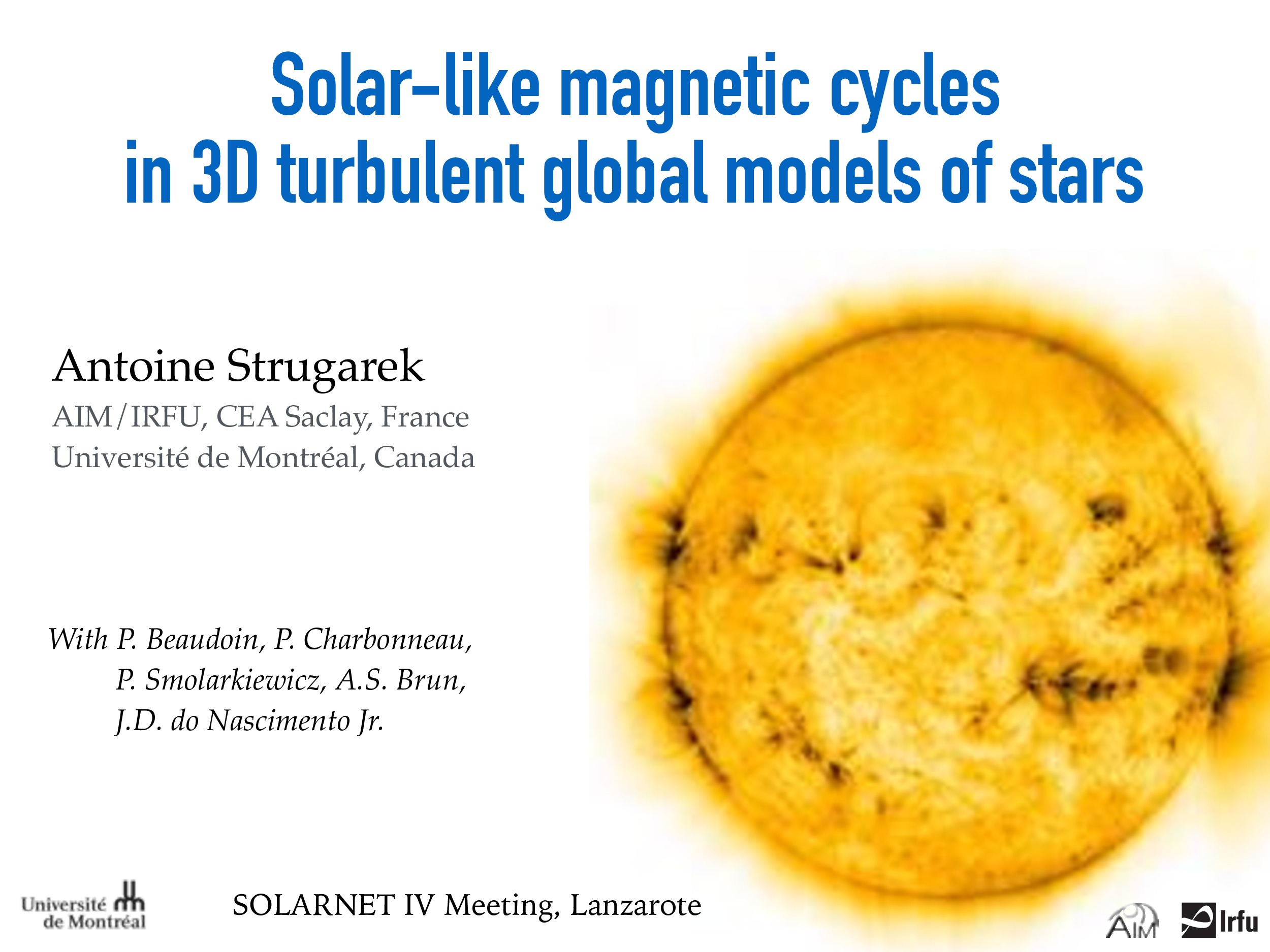

Session: 2. Solar cycle: convection, rotation, dynamo, and flux emergence
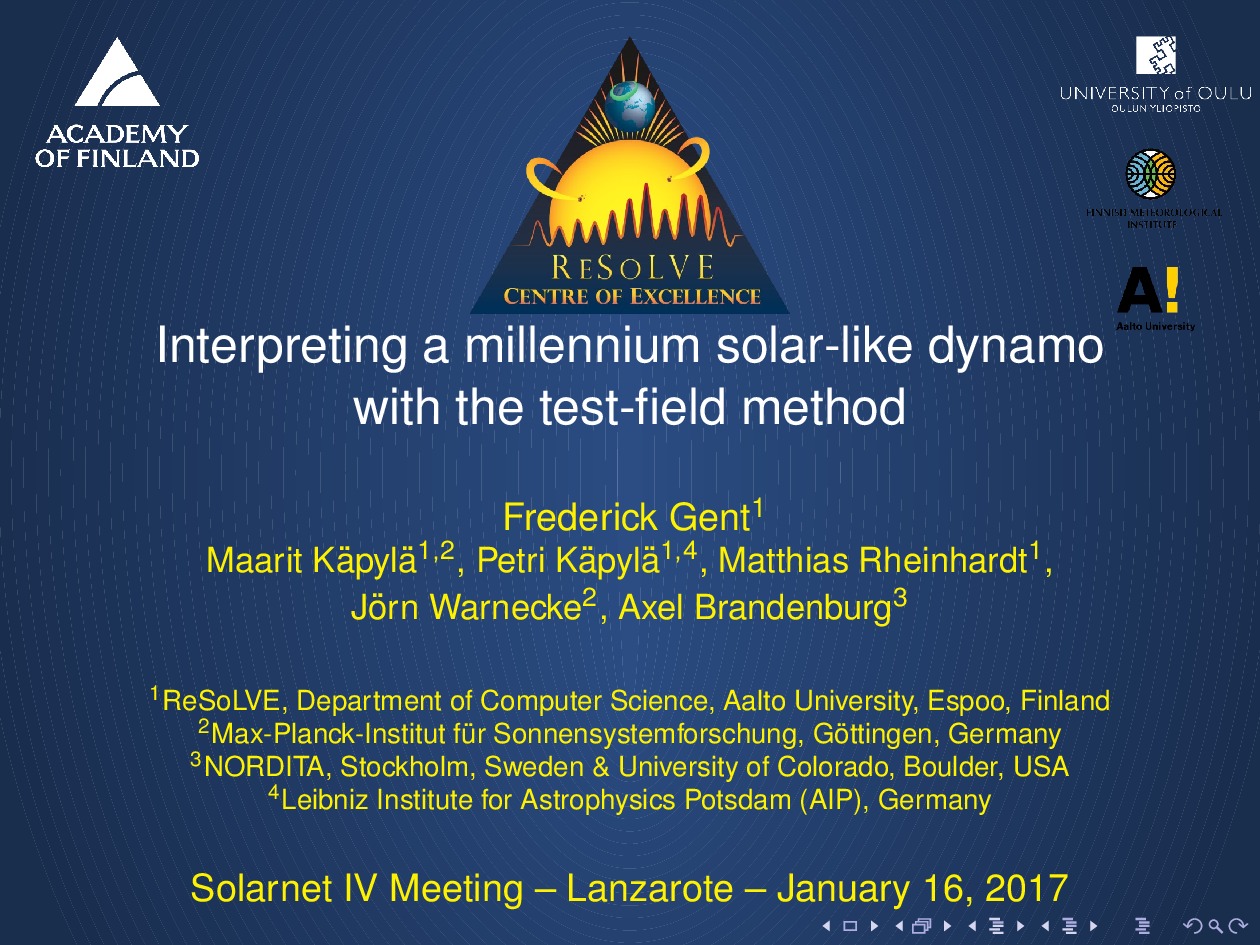

Session: 2. Solar cycle: convection, rotation, dynamo, and flux emergence
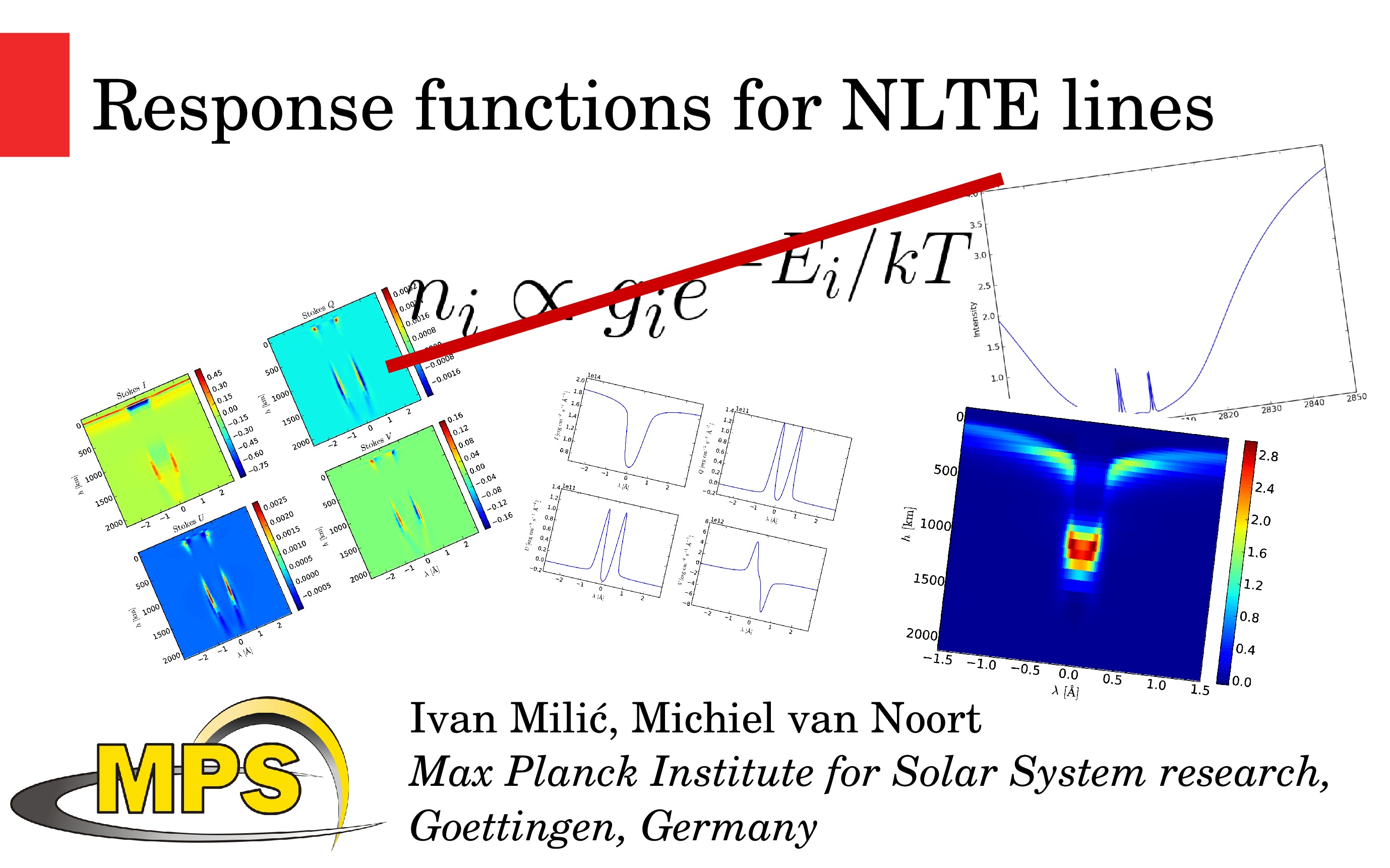

Session: 3. Theoretical radiative transfer and spectropolarimetry
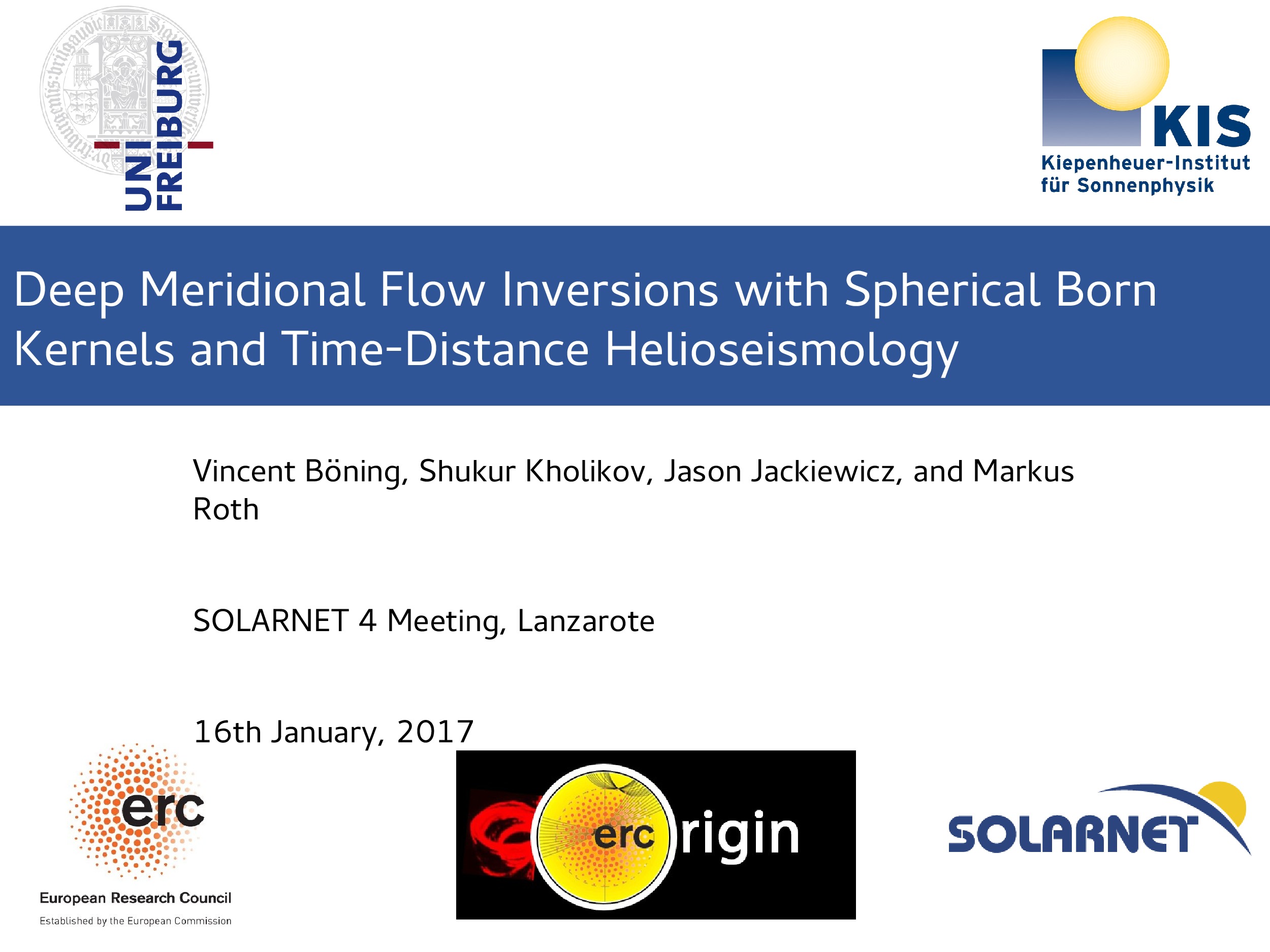
Session: 1. Solar internal structure from helioseismology

Session: 7. Energetic events, flares and CMEs and space weather
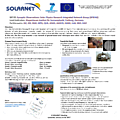

Session: 8. Upcoming telescopes and instruments

Session: 1. Solar internal structure from helioseismology

Session: 4. Photospheric dynamics and magnetism

Session: 6. Corona and transition region: dynamics, magnetic fields and heating mechanisms
| First Name | Last Name | Affiliation |
|---|

